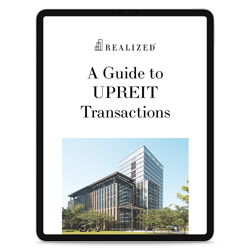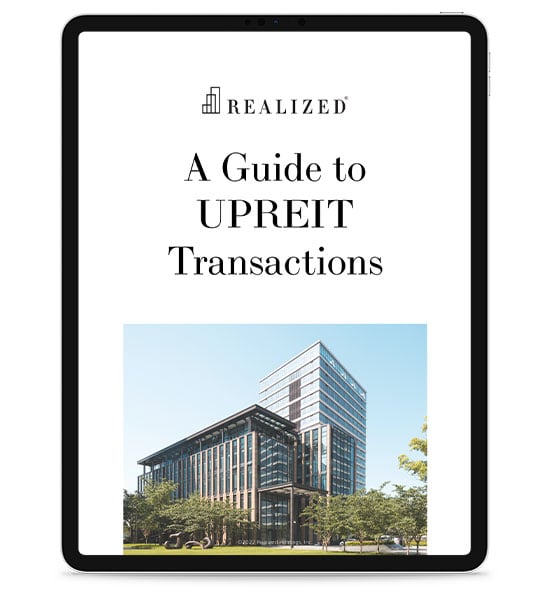
For some investors, real estate remains high on their list of preferred investment vehicles -- and in many cases, for good reason.
Asset appreciation in many different commercial real estate sectors over the past decade has been nothing short of remarkable. Vacancy rates also have trended lower across multiple asset classes, while strong demand for space has led to higher lease rates and increased sale prices for property owners.1
Not everyone was cut out to be a landlord, however, and for many retail investors, purchasing multimillion-dollar commercial assets is well out of their financial reach.
Real estate investment trusts (REITs) were created in 1960 to allow solo investors to invest in large-scale real estate without the financial and managerial burdens tied to direct property ownership of large-scale commercial assets.
In this article we’ll take a closer look at how investors can choose REITs that match their investment strategies and risk profiles.
How Do Real Estate Investment Trusts Work?
Investors who want to add equity in commercial real estate to their investment portfolios often purchase shares of real estate investment trusts.
REITs own and typically operate income-producing real estate, often across multiple geographical locations and asset classes -- though many REITs focus on just one sector of commercial real estate, such as hospitality, retail, or healthcare. Retail investors can purchase shares of publicly-traded REITs just like any other stock. Well-healed accredited and institutional investors, meanwhile, often purchase shares of private REITs through private-placement offerings, although online crowdfunding platforms have changed the investor profile for non-traded private REITs.
According to the National Association of Real Estate Investment Trusts, more than 145 million American investors hold REIT stock in their portfolios, often through retirement accounts or pension plans. In order to qualify as a REIT -- and avoid taxation at the corporate level -- the company must return no less than 90 percent of its taxable income back to shareholders in the form of dividends. There are many other operational and organizational caveats about REITs you can learn more about here.
What Are The Different Types of REITs?
There are two main types of REITS: equity and mortgage.2 Here’s a closer look at each:
Equity REITs.
Equity REITs own and typically operate large-scale income-producing properties. These assets typically include:
- Data centers
- Office buildings
- Self-storage facilities
- Large multi-family apartment complexes
- Managed or acute care facilities
- Hotels and other hospitality assets
Equity REITs hold more than $2.5 trillion in U.S.-based real property assets.3
Mortgage REITs, or mREITs.
Mortgage REITs -- often called mREITs -- have a much different business model than equity REITs. Mortgage REITs finance the mortgages on income-producing properties and mortgage-backed securities using debt capital and equity. They derive income from the spread between funding costs and the interest rates on financing.
MREITs usually focus on either residential or commercial mortgages, though some invest in both markets.
How To Evaluate REITs to Invest In
Now that we’ve outlined the basics of REITs, it’s time to determine how to evaluate REITs to invest in.
Like any other investment, there’s no magic formula for picking suitable investments that fit within your risk profile and investment philosophy. However, all publicly-traded REITs are registered with the Securities and Exchange Commission, so they are required to publish the same financial reports as any other publicly-traded company. Solo investors can review these documents to learn more about company metrics such as assets under management, experience of key corporate executives, company risks and opportunities, and other candid information to help investors make more informed investment decisions. Most of this important information can be found in the company’s annual 10-K report.
Outside of poring over hundreds of pages of legalese and flowery language, investors also can use personal insight if they have previous experience with investing in commercial real estate. Most REITs have a sharp focus on one sector of commercial real estate. Looking at REITs that focus on asset classes with which you are familiar can help manage risk and potentially increase investment opportunities. Individual investors also can get exposure to REITs via Index exchange traded funds and sector ETFs that only invest in REITs.
Other important factors to consider when reviewing REITs include yield and dividend history, types of properties under management, geographical location, and funds from operations (FFO), an important metric that’s a strong financial indicator of a REITs true cash flow.
The Bottom Line
When evaluating REITs, dig deep into company metrics, and as with any investment, weigh risk versus reward and only invest when opportunities align with your investment strategies.
1. Commercial Real Estate Outlook and Trends, National Association of Realtors Research Group, February 2020, https://www.nar.realtor/sites/default/files/documents/2020-02-commercial-real-estate-market-trends-and-outlook-01-29-2020.pdf
2. What Are the Different Types of REITs, Nareit, https://www.reit.com/what-reit/types-reits
3. Guide to Equity REIT Investing, Nareit, https://www.reit.com/what-reit/types-reits/guide-equity-reits
This material is for general information and educational purposes only. Information is based on data gathered from what we believe are reliable sources. It is not guaranteed as to accuracy, does not purport to be complete and is not intended to be used as a primary basis for investment decisions. It should also not be construed as advice meeting the particular investment needs of any investor. Realized does not provide tax or legal advice. This material is not a substitute for seeking the advice of a qualified professional for your individual situation. There is no guarantee that companies that can issue dividends will declare, continue to pay, or increase dividends. A REIT is a security that sells like a stock on the major exchanges and invests in real estate directly, either through properties or mortgages. REITs receive special tax considerations and typically offer investors high yields, as well as a highly liquid method of investing in real estate. There are risks associated with these types of investments and include but are not limited to the following: Typically no secondary market exists for the security listed above. Potential difficulty discerning between routine interest payments and principal repayment. Redemption price of a REIT may be worth more or less than the original price paid. Value of the shares in the trust will fluctuate with the portfolio of underlying real estate. Involves risks such as refinancing in the real estate industry, interest rates, availability of mortgage funds, operating expenses, cost of insurance, lease terminations, potential economic and regulatory changes. This is neither an offer to sell nor a solicitation or an offer to buy the securities described herein. The offering is made only by the Prospectus.



